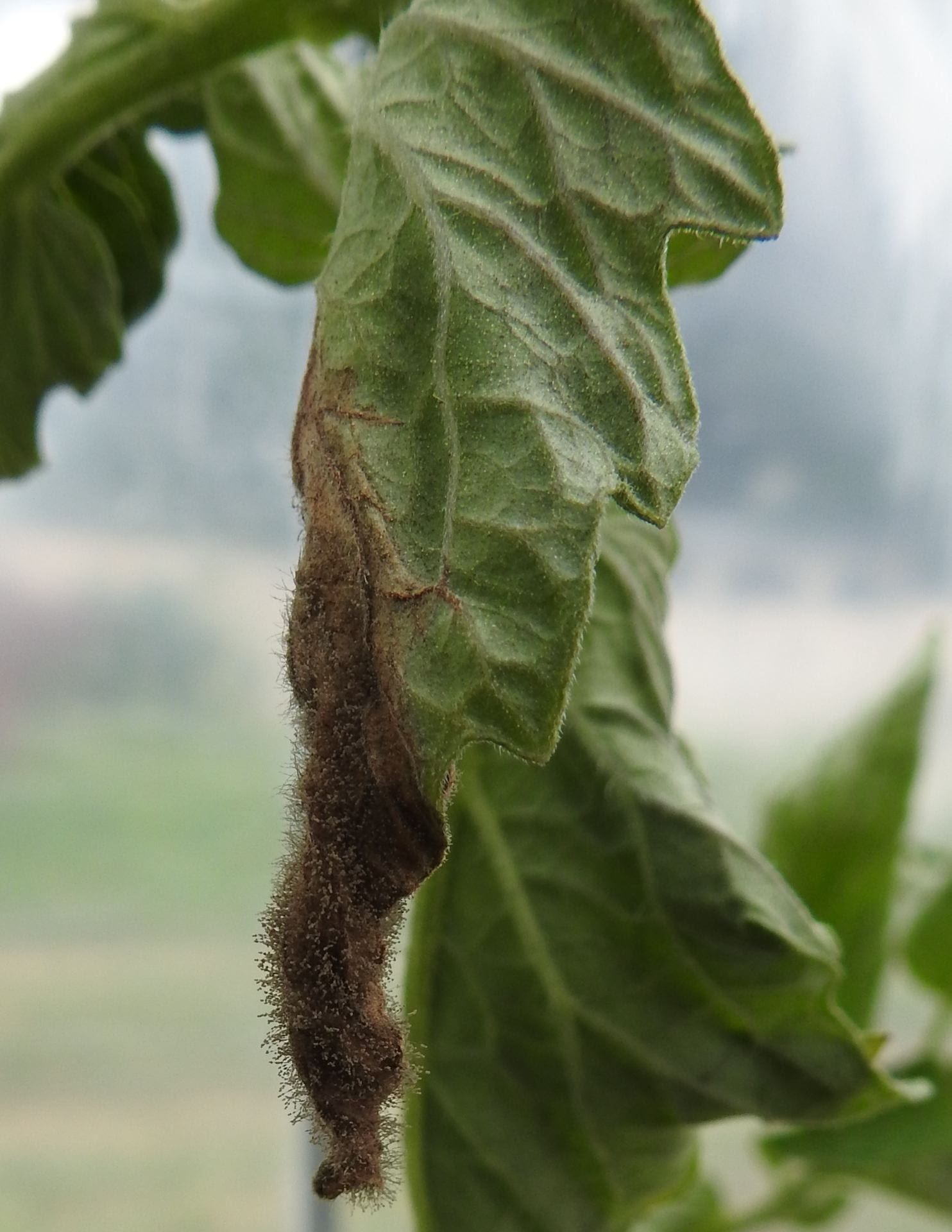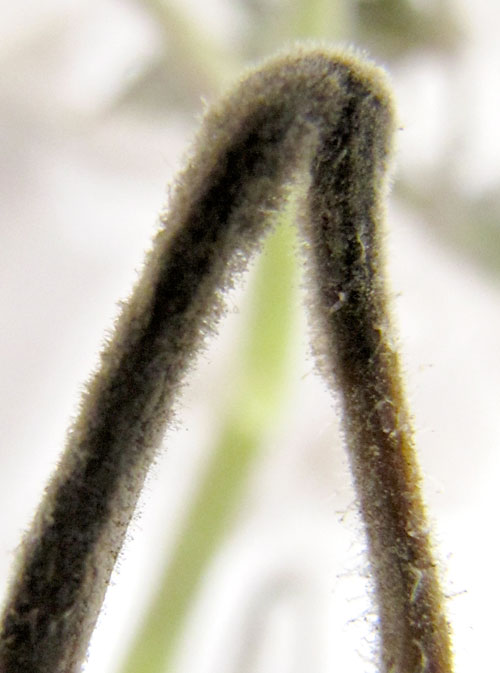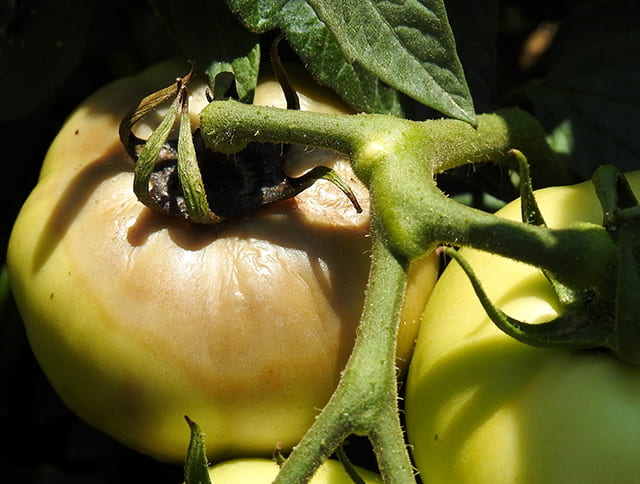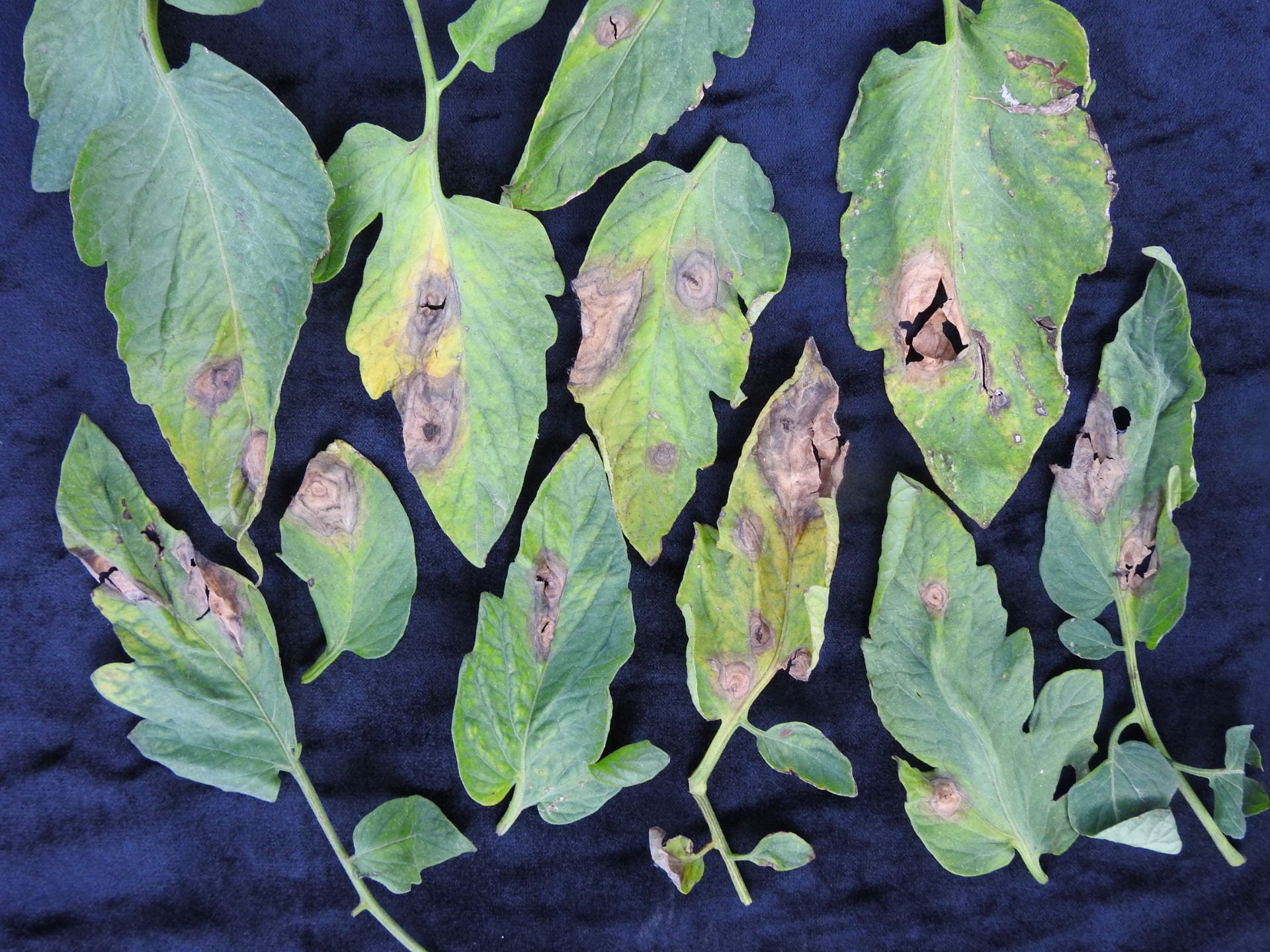A common disease especially under humid conditions (high tunnels and greenhouses) caused by the ubiquitous fungus Botrytis cinerea. It is able to infect many different plants and typically starts on dead tissue.
Cell pack of affected tomato seedlings.
Stem canker (lesion) due to gray mold. (Next four images.)
Note the dead leaf attached to the stem in the center of the canker. The pathogen attacked the dead leaf first, then was able to move into the stem.
Close-ups showing sporulation. (Next four images.)
The gray fuzzy growth of the gray mold pathogen distinguishes this from other diseases, in particular late blight, and from secondary fungi that decompose dead tissue. A good hand lens or microscope is needed to see the growth in enough detail to confirm its identity.
More gray mold images
Gray mold is uncommon on field-grown tomatoes due to humidity being lower outdoors than in high tunnels and greenhouses, which could also account for lack of spore production by the pathogen on the fruit in the image below.
Following leaves were collected in a field planting in mid-August 2021 when conditions were unusually humid. The pathogen’s spores are visible along the leaf margin of the leaf spot on the left in the close-up image below.





















